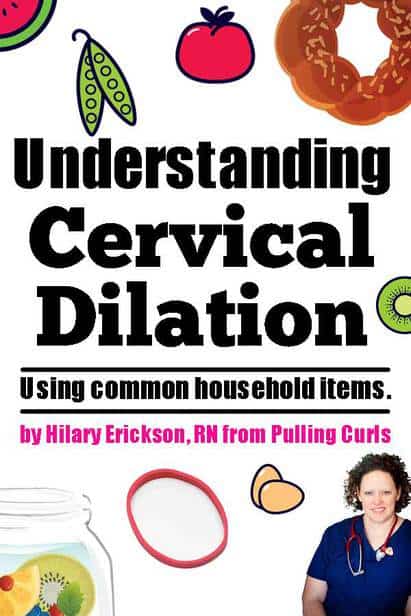Vaginal Exams are a part of pregnancy. Find out what they are used for, how they work and what the numbers mean.

Ugh! The vag (pronounced v-a (short a) g) exam. No one looks forward to them.
The gown, the glove, the whole checking part.
No fun.
BUT, then you end up with numbers and you have no idea what they mean.
Today we’re going to explore the process, tell you what the numbers mean and how you can understand them!
Pelvic Examination Video
Btw, I’m not ACTUALLY doing an exam in this video — and don’t miss the rest of the article underneath it:
**Wondering if you’re in labor — don’t miss my VERY popular page – “Am I in Labor” that gives all the details!
As a reminder, Cervical Exams (or vaginal exams) consist of:

- Centimeters Dilated (given as a number)
- Effacement (given as a percentage)
- Station (given as a positive or negative small number)
So — if your doctor says you’re 2, 90% and -3 — that means:
You’re open 2 centimeters, your cervix is pretty darn thinned out and the baby is still pretty high.
Normally, women’s cervixes thin out before they open up.
Other key points from this video:
- You have 3 holes — you’d be surprised (or, maybe you wouldn’t) how many women I have to explain that to at delivery. You have a hole you urinate out of (urethra), one you have BM’s from (rectum) and your baby exit area (vagina).
- Every practitioner (nurse, doctor, midwife) may vary a bit on their cervical exams.
- Your cervix starts as closed, and you can push when you’re 10 cm.
Vaginal Exam Procedure
Things I didn’t mention in the video that might be helpful to know:
- Usually, your cervix is posterior (more towards your tailbone) when you are in early labor/not in labor and then it moves forward as you progress into labor
- Cervical exams can be painful, but the more you tense up, the worse they are. By relaxing those muscles you are going to be a lot more comfortable, it will be quicker and that is good news for everyone.
- Early in your pregnancy you will need to get a pap smear as well as some cultures, those are different than a cervical exam (although they’re all done in your vagina)
- Cervical exams are more painful when you are in early labor/not in labor than they are as you progress (because your pelvic floor relaxes as well as cervix moving forward making it easier to reach).
- When the doctor “strips your membranes” it is a vaginal exam where he takes his finger and separates the bag of waters from your cervix. This stirs up hormones and may help you into labor (you can read more about that here).
- We use a sterile glove to check you. Newflash: Your vagina isn’t sterile. However, in the medical setting we would like to keep any new bacteria out of your vagina.
- If your cervix is extremely posterior (more towards your tailbone) we may have you put your fists under your bottom, or use an overturned bed pan for you to sit on to make your cervix more reachable. All of that is normal.
- An epidural does take away the majority of the pain from a vaginal exam.
- You may bleed a little after a vaginal exam, this is normal.
If you liked this post/video — be sure to subscribe to my YouTube channel to be alerted to any other upcoming posts.
You might also really enjoy my free beginning prenatal class (you can also find the full version here).
I also have a hospital checklist below and check out my other pregnancy posts below that!


Or, check out my other posts with video:


Original article and pictures take www.pullingcurls.com site
Комментариев нет:
Отправить комментарий